The Perfect Camera For Backpacking (with video!)
The Fujifilm X100V might actually be the perfect ultralight camera for backpackers looking to capture fleeting moments in time on the trail. As with all things gear-related, it’s up to the needs of the user to determine whether or not it’s “perfect” but, I think the Fujifilm X100V no doubt stands out among the crowd as a very viable option for backcountry photography.
The Fujifilm x100V is the 5th generation of the beloved street photographer’s camera because of how compact and portable it is. With the recent addition of weather resistance (with the addition of a front filter) and a tilt screen, I think it just became one of the best cameras you can buy for ultralight backpacking for those looking to step up their photography game without going full tilt with a large DSLR camera.
Fujifilm x100v for backpacking and hiking
My Background in Photography and Backpacking
I’ve loved photography nearly all my life, but when I began blending my love of photography with my new love of backpacking, things got a little complicated. Depending on where you’re at in your photography journey, you’ve either resorted to just using your phone, a compact point, and shoot camera, or you’re hauling around a big DSLR praying to god you can get a shot that is worth the weight of the lens or lenses you have on you.
It’s a never-ending debate in my head when I’m getting ready to leave my house. Do I bring my bigger mirrorless DSLR camera that I love OR do I save the weight and the hassle and just head out with my phone. They’re both great options, but they come with their own set of limitations and drawbacks.
The larger DSLR type of camera with interchangeable lenses provide you with OUTSTANDING image quality, features, and capability. There’s just no getting around that. Depending on the camera, you might even get some weather sealing as well (which is a must for backpackers). The problem is that they’re big and bulky. There’s just no getting around THAT either.
For professional backcountry photographers, these cameras are the pinnacle choice because when your paycheck is riding on not only capturing the shot but also capturing MANY versions of the same shot, they need a camera system that allows them to do that. Hence the multiple lens setups.
But what about those of us who don’t make a living making photographs for magazines and publications?
Do we really need to carry around a large camera to document our adventures? Most of the time that answer is “no, I’ll just use my phone,” and that’s a fine and perfect answer. I actually hiked the Pacific Crest Trail capturing some incredible moments along the way with just my iPhone. To this day people ask me what camera I was using because of how stunning some of the images were.
I LOVE my big camera, but it’s also big. I look back at my 2000 mile journey and wonder how many images I wouldn’t have been able to capture because I would have either been too lazy to pull the camera out or because it simply took too long to set up in the first place. That’s why using a phone is so great. It’s quick, easy, and also VERY lightweight.
There’s only one problem with using your phone for documenting the backcountry and that’s the size of the image sensor and the ability to fully control the outcome of the image. Phones are point and shoot cameras so you essentially get what you get and when it comes to the size of the sensor, the quality of the image starts going downhill pretty fast in lowlight conditions (which just so happens to be the best part of the outdoors).
For those like myself who enjoy the creative process of photography and want the full creative control of a camera without the bulk of a DSLR, the Fujifilm X100V is the ticket to capturing the moment with the result of a high-quality image.
Why the Fujifilm x100V Is Perfect For Backpackers
If we’re cutting right to the chase, there are four specific reasons that the X100V is perfect for backpackers.
LIGHTWEIGHT, PORTABLE, AND EASY TO CARRY
If there’s one thing that sucks about carrying a camera into the backcountry it’s the portability and the weight. It’s important to shave as much weight as you can so your gear doesn’t burden you down too much and camera gear tends to be on the heavier side. When I sent my big camera home from the PCT in 2017, I literally dropped 5 lbs. of gear in a fell swoop! Less weight means more miles, more fun, and LESS PAIN.
It’s for that exact reason that the X100V is hovering around the top of my charts for the perfect backpacking camera. It weighs in at just 1 lb. which means you won’t really notice it no matter how you carry it. Be it around your neck with a camera strap, stowed in the waist-belt pocket of your pack, or in a trendy trail fanny pack, the X100V can be ready to rock at a moment’s notice without much struggle at all.
PRO TIP FOR TRAIL PHOTOGRAPHY: If your camera isn’t out and ready to go all the time, then what’s the point of having it? You might have the nicest and most expensive camera system in the world, but if it’s stowed away in your pack because it’s hard to carry and you don’t want to get it wet, then you might as well be hauling around some rocks with you.
Cameras can’t capture moments if they’re not readily available!
2. WEATHER RESISTANCE
If the ability to have your camera out and ready to go at all times is the end goal, then you’re going to risk it getting wet at some point or another. Ask any great backcountry photographer about what makes a great image and they’ll most often tell you that it’s when everything goes to hell with the weather. Weather means emotion and struggle so you NEED to have your camera out ready to go, but the problem is that a lot of them don’t come with any weather sealing.
The Fujifilm X100V is now weather resistant! All you need to do is toss on a clear protective filter to the lens and you’re good to go! That puppy will be sealed up ready to rock no matter what the conditions might be (not waterproof…but WEATHER resistant)
That means more photos, more emotion, and more memories captured. If you don’t think it’s necessary or you don’t think it’s that big of a deal, then I’ll tell you a quick story.
Each year do the same big hike around Mount St. Helens because it’s fun and it’s always different. I’ve always had a weather-sealed camera, but my friend who joined me didn’t. We woke up the first day to a constant drizzle but decided to hike out anyhow. Fast forward about 10 miles or so and his camera literally stopped working. It wasn’t pouring rain and he wasn’t dunking it in water. It was just out on his backpack strap ready to go until it wasn’t.
The body of his camera was sealed, but the lens wasn’t, and he was dead in the water. His camera was officially a rock. It sucked to see him come around the corner and tell me it was smoked. Lucky for him it started working later that day after it dried out a bit, but if that’s not a lesson for you, I don’t know what is.
If you backpack, you NEED to have a camera that is sealed from the weather or you risk damaging it or missing the shots you brought it out to capture.
The Fujifilm X100V is now weather resistant which means it’ll have your back when things go south on you.
3. USB CHARGING
This is pretty straightforward. The X100V’s battery can be charged via USB which means all you need to do is bring with you a portable power bank (which you probably already do anyhow) and voila, you have more power for more shots.
This is the one feature that backpacking cameras MUST have to be viable in the backcountry. Part of the 5 lbs. of camera gear I sent home was a battery charger that had to be connected to a wall to function because I apparently overlooked important requirements when I originally made my purchase. Finding out your camera can’t be charged by a USB cable when you thought it could be is demoralizing.
I could have brought a ton of batteries with me, but at SOME point I’d have to charge them, right? I now won’t even entertain a camera if it doesn’t have the ability to charge via the USB interface.
Lucky for you, the X100V has the ability to charge from its USB port yet again making it top the charts as one of the best cameras for backpacking
4. FIXED 35MM EQUIVALENT FOCAL LENGTH LENS
Having a fixed focal length lens attached to the X100V is the exact reason why it’s been such a popular camera for so long. If you’re not familiar with what I’m talking about, the X100V does NOT have an interchangeable lens meaning your field of view is fixed. No zooming in, no zooming out. If you want a closer perspective, you have to move your legs to get it.
It might sound like a con, but it’s really not. The X100V wasn’t designed to be a wildlife camera that allows the user to zoom in from far away. It was designed as a documentary-style camera where the user wants to capture the scene around a certain subject or topic and the 35mm full-frame equivalent lens does just that. This focal length isn’t too wide to where becomes difficult to isolate a subject in the frame and it’s not too narrow that there’s no telling where the subject IS in the frame.
The 35mm field of view is perfect for landscape shots AND capturing people living life on the trail which is why that focal length is so beloved by street photographers and documentary/travel photographers around the world.
I know it sounds restricting, but it’s not. It’s actually quite the opposite. Yes, you’ll miss SOME shots, but that’s not always a bad thing. We can’t capture EVERYTHING we see, right? We have to be selective in the things we choose to document and if you’re a fan of photography or you’re just now getting into it, having a fixed focal length lens is a huge benefit to your creativity. You’re forced to really think about your shot versus just pulling up a zoom lens and being lazy about your image taking.
I can’t tell you the number of times I’ve failed to move my body around to take a picture because my zoom lens was doing all the work for me. I thought I was getting the shot, but I wasn’t. Those images were bland and boring, but for some reason, the ones with my phone that essentially has a fixed lens had far more emotion to them.
Huh? What? A camera on a phone gave more emotion?
Yep! Because I had to work for the shots I was taking. This is the exact reason I love the idea of the Fujifilm X100V. For all the reasons stated above AND the gift it gives you of problem-solving creatively with your entire body.
The 35mm full-frame equivalent field of view is perfect for documenting and adventure, life on the trail, and landscapes. It forces you to work within a structure that results in more quality images because you’re not tempted to just spray and pray all day long with a zoom lens.
What the X100v Is Not
It’s important to understand the limitations of gear and what it’s designed specifically for so you get the most out of your purchase and therefore experience. Once upon a time I was young and had opinions about what gear was good and what was bad, but I’ve since realized that anytime I didn’t like a piece of gear, it usually wasn’t because it was actually BAD, it was because I was using it in a way that it wasn’t intended.
If you’re into wildlife photography where you can count the nose hairs on a mountain goat, the X100V is not the camera for you (unless of course you have a less than ideal run-in with a goat and finally learn why they have horns).
If you’re passionate about wide sweeping landscape photography, the X100V is again, not for you.
And, if you’re a video shooter or vlogger, this camera isn’t likely for you either. Though it can shoot video, it’s missing some key features that make it a great camera for video, but again, this camera was NOT intended to be a video-centric camera.
The Fujifilm X100V is a photography centric camera for documentary/street style work. If you’re looking to capture closeups of wildlife, ultra-wide-angle landscapes, or use it as a video camera, you should no doubt look elsewhere. There are far better systems for that style of work and that doesn’t mean the X100V is bad. In fact, it’s quite the opposite.
The X100V can only be considered a “bad” system if you force it to perform in a manner that is not aligned with its intended end user. This same concept applies to nearly all things we purchase in our everyday lives down to the food we eat, chairs we sit on, and beds we sleep in. You wouldn’t try cutting a steak with a fork and you wouldn’t try eating cereal with a fork.
PRO TIP: Seek out and find gear that matches YOUR purpose and mission. You’ll be far happier and more comfortable. The more specific you can be about your gear and it’s purpose for existing, the better off you’ll be in the end.
Who the Fujifilm X100V Is For
If you haven’t read the above list of what the X100V is NOT, then please do so now before continuing on. Sometimes it’s better to know who it’s NOT for before knowing who it IS for.
The Fujifilm X100V is photography centric camera designed for documentary-style images. The 35mm full-frame equivalent field of view affords the photographer a creative window large enough to include the subject’s environment while maintaining the integrity OF the subject. Go with too wide of a lens and you can easily lose the subject in the frame, but go to narrow and you have no context for where the subject is at (a subject is a person or thing).
In my experience, the fixed focal length of the X100V is just about perfect for documenting daily life on and off the trail. When I look back at my favorite images of the PCT, they’re the ones that have a nice balance of the subject AND the environment. If you’re wanting to capture a singular moment in time in the backcountry, the X100V will be your best friend.
You can easily capture a sunset, sunrise, fog through the trees, a person on a trail, a campsite, and so many other brilliant things you might see out there. The brilliance of the X100V’s design takes the guesswork out of trying to figure out what lens to use and what focal range to apply because it only has one. If you want to get a closer shot, you just move closer.
One of the biggest lessons backpacking has taught me about basically everything in life is simple is better. Simple is streamlined, and simple is relaxing. The more gear and options you have, the more cluttered your brain will be and you’ll risk just going with the flow.
All that to say, the X100V is a camera built with the documentary photographer in mind which is why I love it as a backpacking camera.
Hands-On the Fujifilm X100V
It’s going to be hard not to word vomit all over this post right now with the nitty-gritty details of this camera so I’m going to do my best to keep it as simple as possible and go at this thing from the perspective of what a BACKPACKER needs in the field.
Before I get into this, let’s set some ground rules for how I’m looking at this camera.
This is NOT a telephoto camera for wildlife photography and I don’t expect it to be that, nor do I WANT it to be that. This is a documentary-style camera so that’s how I’m looking at it.
This is NOT a camera designed for video production, but with that said, it DOES have some nice video specs.
I’m approaching this camera AS A DOCUMENTARY STYLE PHOTOGRAPHER.
To me, aside from being quality, a backpacking camera has to be easy to use, durable, dependable, and efficient. If you’re not able to have it out ready to use, confused about HOW to use it, or afraid it’s going to break in the field, then you have a dud of a camera.
*WARNING* This is NOT an in-depth review of the X100V. I’ve only had it for 3 weeks and I’d need a lot more time with it to REALLY deep dive into how it does long-term, but I DO think I have a pretty good idea of what to expect from it. It was basically in my hands ready to go nearly every day for 3 weeks.
Feel
The overall FEEL of the camera is really nice. It’s a solidly built body and does not feel dainty or plastic-like by any means. They probably could have made the camera out of lighter materials, but it wouldn’t feel right. As with most things, if it feels flimsy or too light, you automatically think it’s going to break or fall apart. The X100V is a sturdy little camera that I would have NO problem exploring the backcountry with.
Function
I’ve been an Olympus shooter for a lot of years so it took me a while to figure out the functionality of an entirely new camera system. At first, I felt like I was doing things that I shouldn’t and at one point I put everything back to factory settings so I could start over again. As it turns out, the way the camera comes from the factory is pretty straightforward and functional so there’s really no customizing to be done to buttons and levers.
It took me a few days to get used to how Fuji does things, but after that, I was up and going with no problems. If you EVER find yourself with a camera that you can’t seem to figure out, you either need to get yourself a camera that DOES make sense to you, OR stop being lazy and do your reading on how best to USE your new camera. I say this because I realized after a few days that I’ve spent years researching Olympus camera systems and figuring out what settings produce the best images. I was able to do this same thing in a matter of days with the X100V and eventually found what I was looking for in imagery quality.
Quality
There are two types of quality; CAMERA quality, and IMAGE quality. I think at this point in the game, the only reason you’d ever have a BAD image come out is because of user error. Any digital camera built within the last decade is more than capable of producing incredible imagery. It’s just a matter of the USER doing the work. So in short, the image quality is incredible.
On the hardware side, the X100V is no doubt a quality camera capable of holding it’s own in the backcountry. I don’t believe it’s going to break or fail on you when you need it so have no fear, this little beast of a camera is more than qualified for an adventure!
Handling
I don’t think it would be fair to compare the X100V’s handling to that of a larger professional style camera that is built to WORK. They’re just not in the same league. If you expect a range finder style camera like this to be ergonomic in all respects, you’re going to be sadly disappointed…because I was too until I realized that I was trying to put this camera in the same box as my Olympus OMD EM1 ii. They’re two different breeds and shouldn’t at all be compared.
BUT…since it’s hard not to compare things, I’ll say this; the X100V forces you to SLOW DOWN because it’s NOT the type of camera you can just fly through the settings on like you can a larger professional mirrorless camera. I found myself a little frustrated at first that it was taking me longer to get the right settings dialed in, but what that did for me, in the END, was allow me the time to THINK through my shot longer which in turn produced a better photo.
I admit that I probably don’t think as much as I should when I’m using my main camera. I just fly through the settings all willy nilly like and as a result, I’m not actually THINKING or LEARNING. The X100V has somehow taught me more about photography in the last 3 weeks than my Olympus has in 3 years. The manual dials give you a tactile feel that makes you consider why you’re doing the thing you’re doing rather than just doing it and hoping for the best.
At the end of my 3 weeks with this camera, I was to the point where I was not only thinking through my settings and my shot, but I was thinking AHEAD of my shot and approaching a subject with settings in mind. Crazy right?
In time I think I’d probably get much faster with maneuvering through the buttons and dials on the X100V, but I don’t know if that’s such a great thing after all. I really came to enjoy the fact that it made me slow down and think, which is what photography probably should be in the first place.
All that said, the handling of this camera is just fine. No major issues came to light and anything that did was me not knowing or understanding how to work this camera system.
Durability
I can’t say whether or not this camera is actually durable or not, but from what I can tell it seems to be able to hold it’s own. I cannot buy off on a camera that feels like it’s going to break because when I’m in the field and I’m tired, I can’t be thinking so much about how delicate something is. I want my camera out and ready to go in all situations so I can get the shot I’m looking for.
The X100V appears to be a camera that will no doubt hold its own in the durability category. It was far more robust than I expected when I first picked it up and I’d have no issues bringing it on an extended backpacking trip where it might get a little beat up.
Battery Life
The battery life of the Fujifilm X100V isn’t outstanding, but it’s not terrible. I think for the most part it really comes down to how the user interacts with the camera and what kind of shooting they’re doing. If you’re always in the menu playing around then it’s going to die on you sooner. If you’re shooting video all the time or making the camera work hard, then again…it’s going to die on you sooner.
If, however, you know your camera inside and out, and understand what to do and when then I think you’ll be pretty happy with the battery life.
When I first had the camera out and was figuring out the menu system, the battery died quickly, but as I became more familiar with it, the life of the battery was much better.
One of my biggest concerns was how much of my portable battery bank it would eat up on a charge when fully dead. I was absolutely shocked to see how little it took to charge the camera via the USB port. So much so that I thought maybe something on my power bank was broken. I charged the X100V fully again and it again showed me that it really doesn’t soak up that much power from my bank.
This is INCREDIBLE for backpackers. No need for an extra battery. Just bring your power bank and charge the camera in the evening or on a break and you’re good to go. Depending on the size of that power bank, you should be able to easily get a week’s worth of backpacking in even if you have to charge each night.
Also, USB charging is amazing!
Overheating
Do any research on the X100V and you’ll see and hear mentions of it getting warm. If the camera is on and working a lot, it DOES indeed get warm. I can’t say that it’s a concern for ME personally because I don’t really like to have the camera on too long anyhow, but if you’re the type to always work your camera to death, it’s probably going to be a problem at some point.
As I became familiar with the camera to where I wasn’t in the menus too much, I really didn’t notice the warming of the camera at all.
That said, it IS a little surprising that this is a conversation piece at all. I don’t know of any other cameras out there that are doing this so maybe it’s just a firmware fix.
Ease of Use
Once you get the hang of how the Fuji menu system works and how the X100V is designed to function, the camera is REALLY easy to use. This again comes down to KNOWING your gear. Just like anything else, if you don’t know how to use it, you’re going to struggle.
The X100V was designed for PHOTOGRAPHERS and I’m pretty sure that means it was designed for people who UNDERSTAND photography and how everything goes together. For those who understand how an image is made, this camera is as easy to use as they come. For those WANTING to better understand how images are created, then this camera is going to teach you far more than you could ever want because of how you’re forced to manipulate the dials for a shot.
For those who aren’t in either of those buckets, just use your phone and forget you ever read this review.
Size
The X100V is right about the size where you wouldn’t want it any bigger and if it were smaller you’d be irritated. I think it’s great for backpackers looking to have a smaller and more portable camera that isn’t taking up too much space BUT also allows the user creative control. It’ll fit in a backpack lid, a fanny pack, a large hip belt, or side stretch pocket. If I were backpacking with it, I’d just toss it on a Peak Design camera strap, wear it cross-body, and call it a day.
The X100V is the perfect size for travel. Not too big and not too small.
Enjoyment
I got so much enjoyment out of this camera that I was actually sad to see it have to go back to Fujifilm USA. It was the spark of creativity I needed and for 3 weeks was on the living room console ready to go at any moment. Maybe it was the looks, the dials, or the retro feel that made me love it so much. Whatever it was, I loved having that camera around. I made me feel like I could capture any moment I wanted while knowing it would give me a great image if I got it right.
When I have one of these cameras of my own, you can bet it’ll be on every backpacking trip, every family vacation, and every walk around the block I go on.
Fujifilm X100V Sample Images
Here is a montage of the images I captured over the past few weeks. Because I had this camera with me right in the middle of the COVID pandemic, I wasn’t able to get any hiking in with it, but I think you’ll get a feel for what this camera can do.
*EDITING NOTES: SOME OF THESE IMAGES ARE STRAIGHT OUT OF CAMERA WITH MINIMAL TOUCHING, WHILE OTHERS I PLAYED AROUND WITH A LITTLE JUST TO GET FEEL FOR HOW THEY DO.
Fujifilm X100V
Fujifilm X100V film simulation with minimal retouching
Fujifilm X100V
Final Thoughts On the X100V Being the Best Camera for Backpacking
The best camera isn’t’ “the one you have on you” as the saying goes, and it’s not the one that tops the charts with professional photographers. In reality, it’s the one you KNOW THE BEST inside and out. If you owned the fastest car on the planet but didn’t know how to drive it, then what’s the point? You’d never get it up to top speed and never win a race. The same goes for cameras.
I get it though. If you’re looking to capture a moment in time, you have to have something on you to do it right? So yeah, I guess you COULD think of having ANY camera as being the BEST camera if capturing a moment is all you care about, but I think it’s only half the tale.
The other half is how WELL you KNOW the camera that you have on you. If you’re incredible at taking images with your iPhone, but have no idea what you’re doing with a mirrorless system, then I’d argue that the best camera for you IS actually your phone because you’ll not only be able to capture an image, but you’ll be able to do so at a higher quality.
I know people who make an iPhone look absolutely stunning, but if I put a pro camera body in their hands they fall apart. I ALSO know those who can blow your mind with a professional camera but crumble with anything less. So again, it really comes down to HOW WELL YOU KNOW YOUR CAMERA rather than what camera you have with you at the moment.
Spending 3 weeks with the X100V proved this concept to me real quick. At first, I was fumbling through my shots until I figured out what was going on and finally got into a groove with the camera. At that point, the ratio of bad to good images changed. I was nailing my shots far better once I KNEW the camera whereas before I felt like I had just picked up a camera for the first time.
So is the X100V possibly one of the best cameras out there for backpacking? Maybe, maybe not. I think it certainly offers all the features that a backcountry camera requires so the rest is really up to you, the user. I personally think that the Fujifilm X100V pairs very nicely with backpacking. It’s small, light, durable, capable of incredible images, and fits well into the culture of backpacking in that it is built for documenting the world around you.
I believe that the X100V could be a great companion for long-distance backpackers traveling the PCT, AT, and CDT trail systems. In fact, it’s almost as if this camera was built with that style of life in mind. It’s an intentional system that’s not overly complicated or hard to use and produces amazing results. If I were ever headed down the trail again for a 5-month trip, I’d have this camera right there with me for the ride.
If you’re into backpacking, be it long distance or just for the weekend and shopping for a camera you can grow with, consider the Fujifilm X100V. It’s a big step up from your camera phone and won’t load you down with the weight of a large professional mirrorless system.
Emory, By Land
Thanks for stopping by the website and checking out this article! If you have any questions for me or want to connect, you can leave a comment below or shoot me a personal message at emory@byland.co.
Support By Land
By Land is independently published meaning no one pays to have this content written or created. If you’ve enjoyed this article, the website, resources, or other By Land content and want to become a supporter, please consider making a one-time donation. 100% of each donation will go right back into operational costs so I can continue to bring you the same great content for years to come!
Thank you!


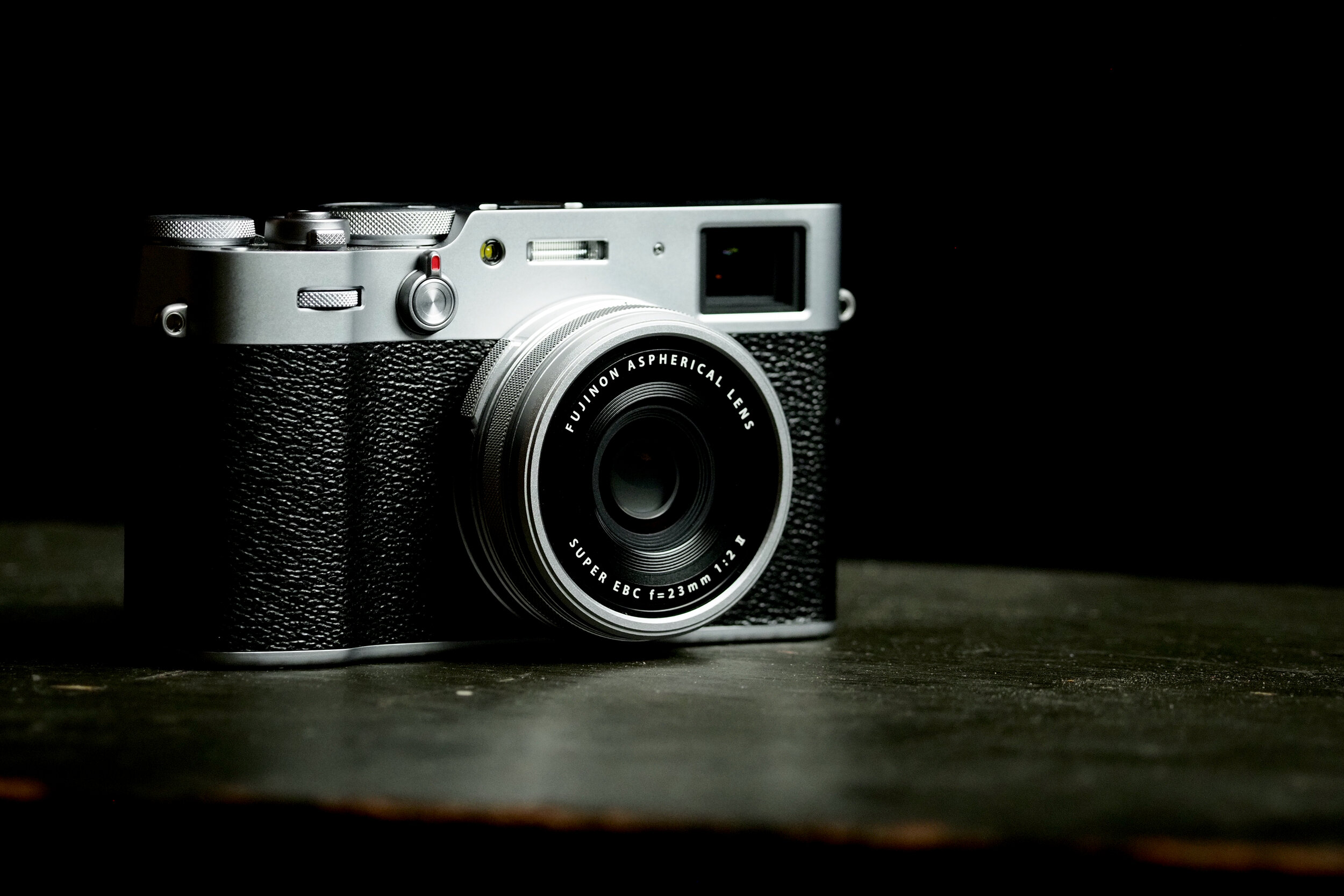










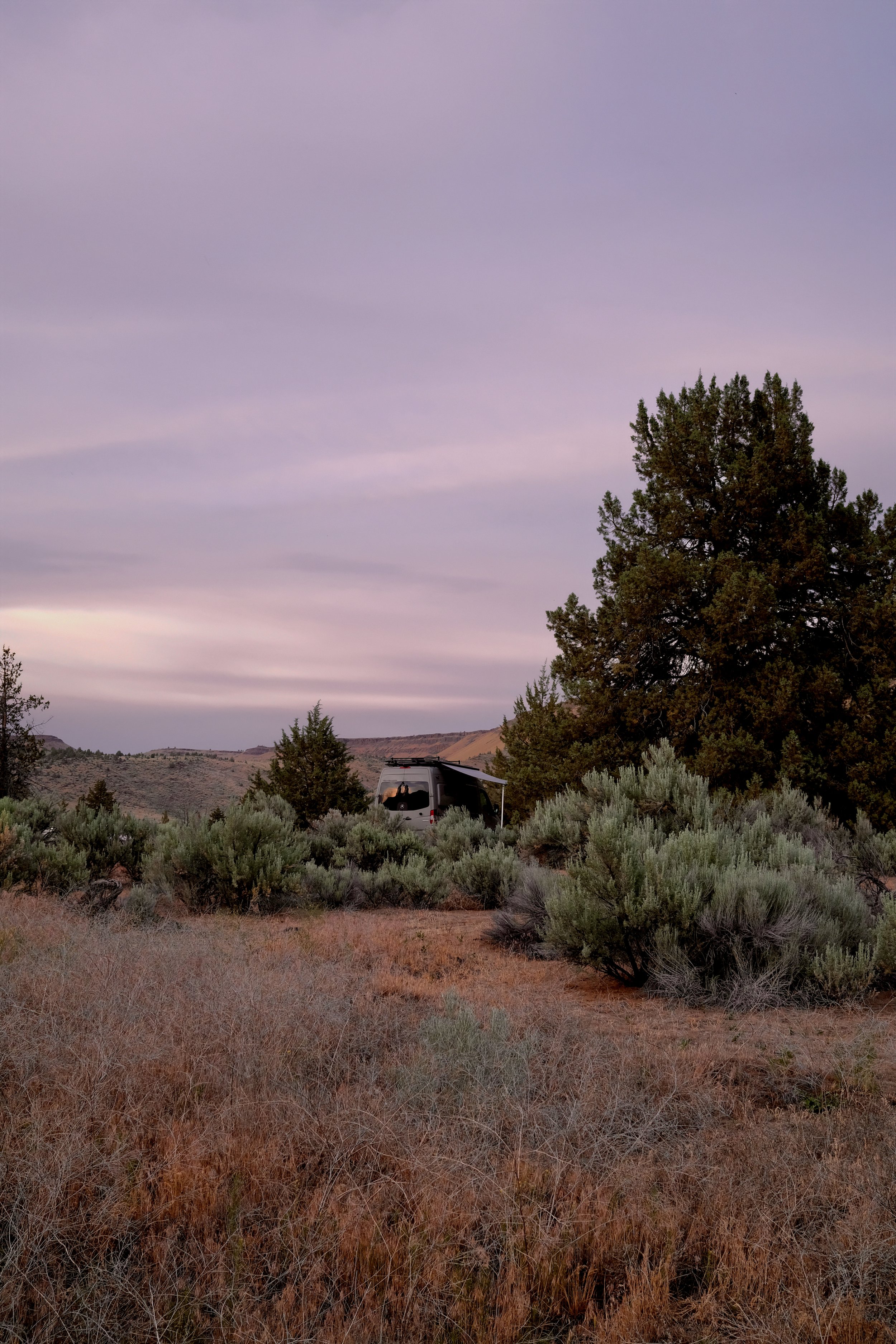

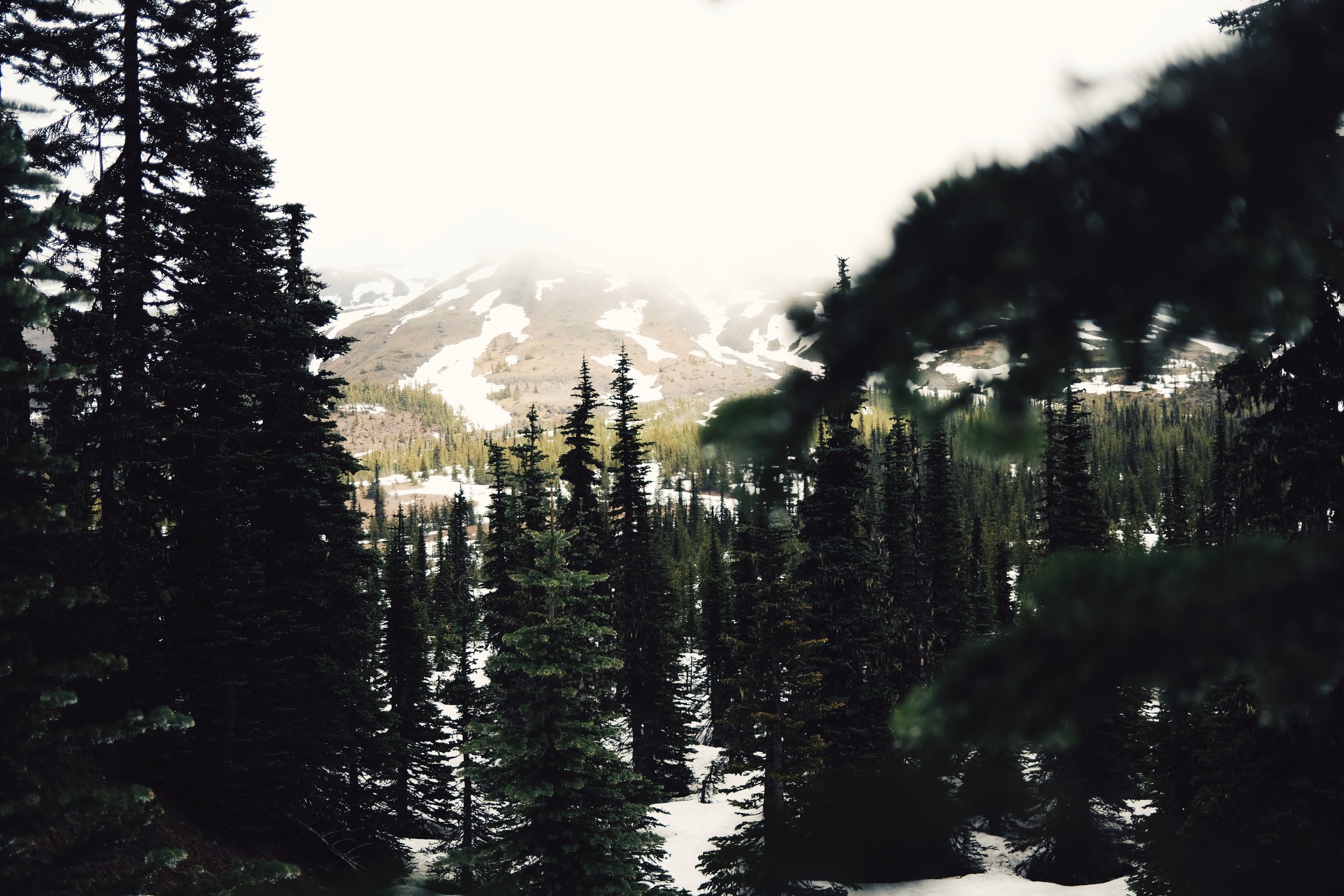
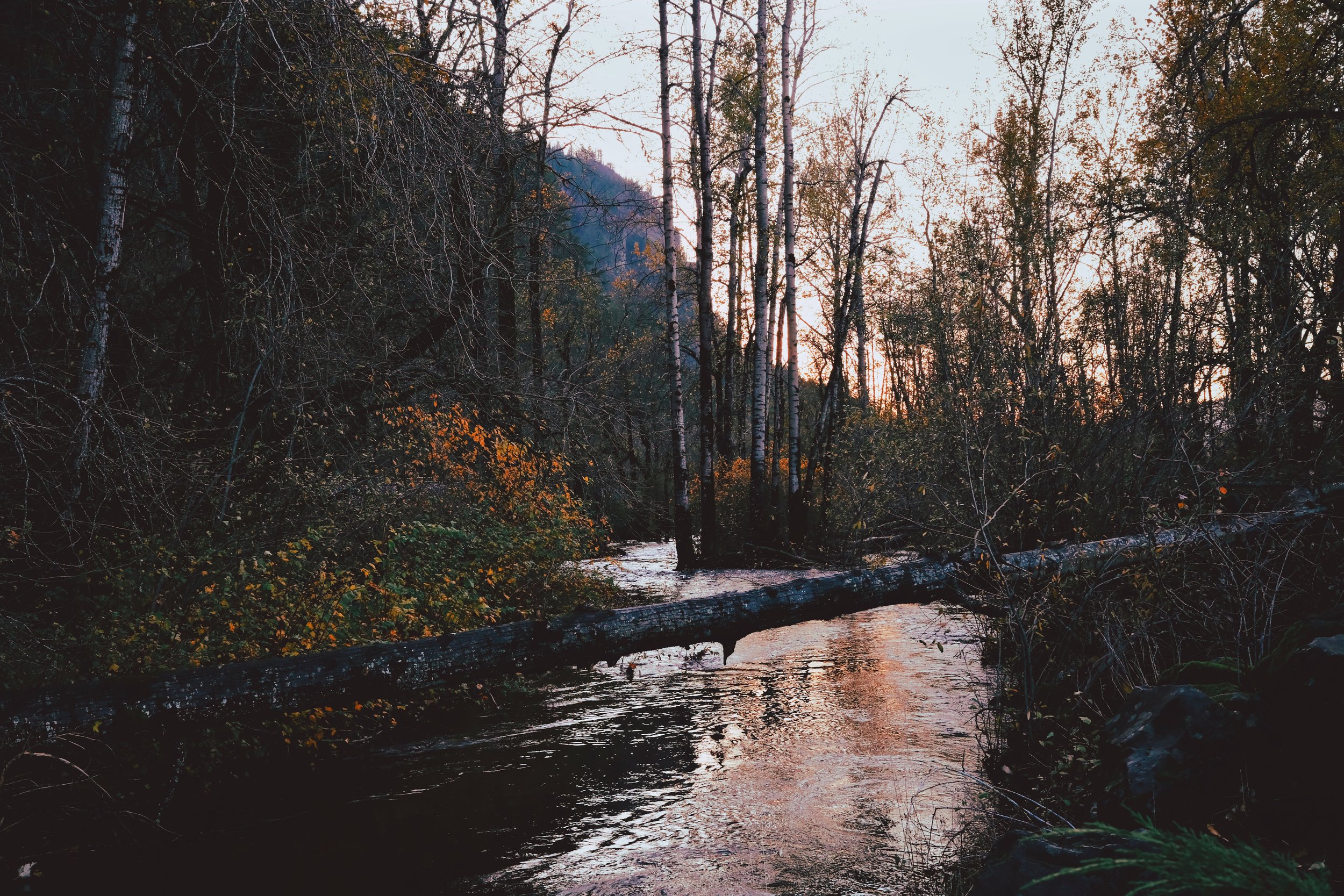
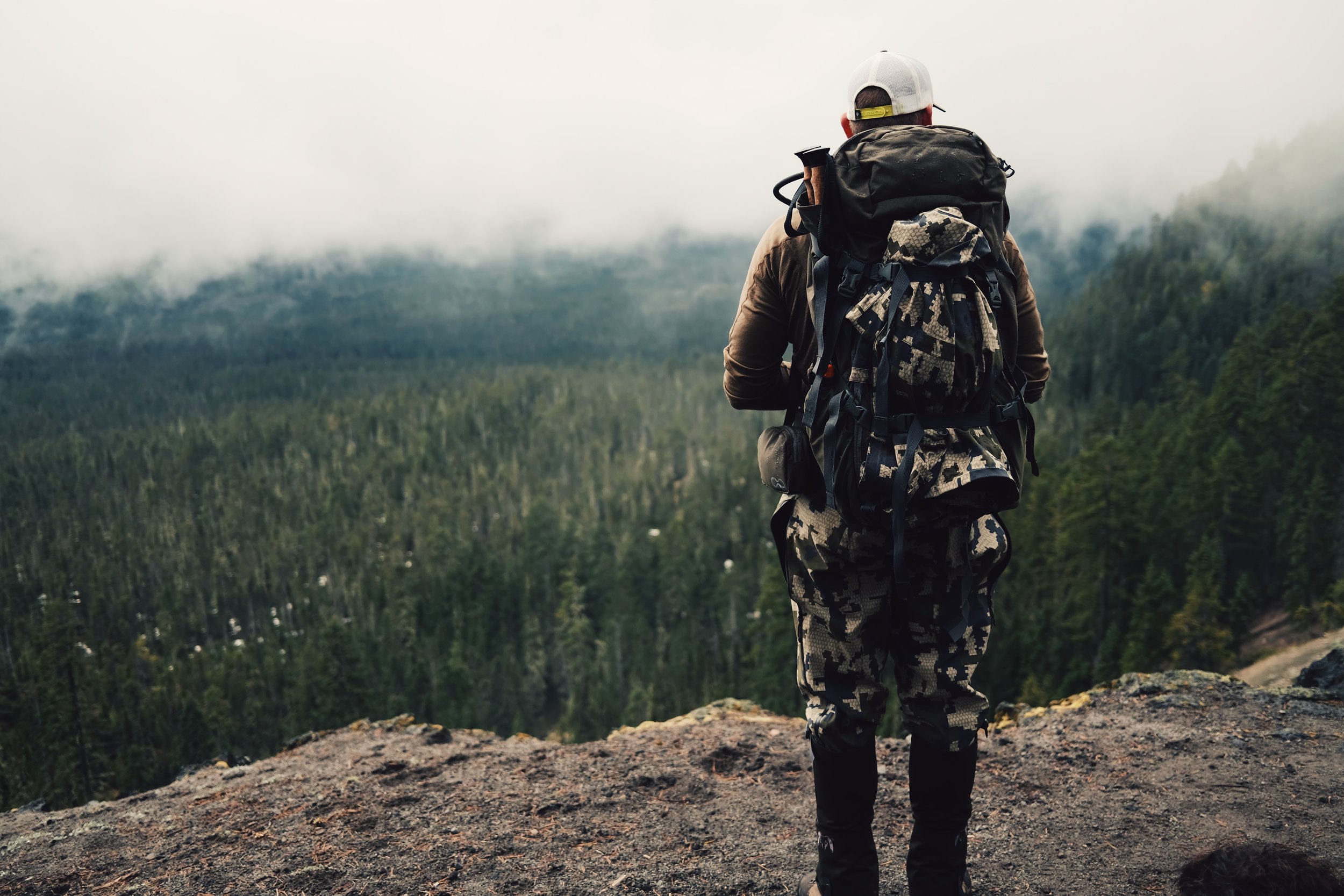
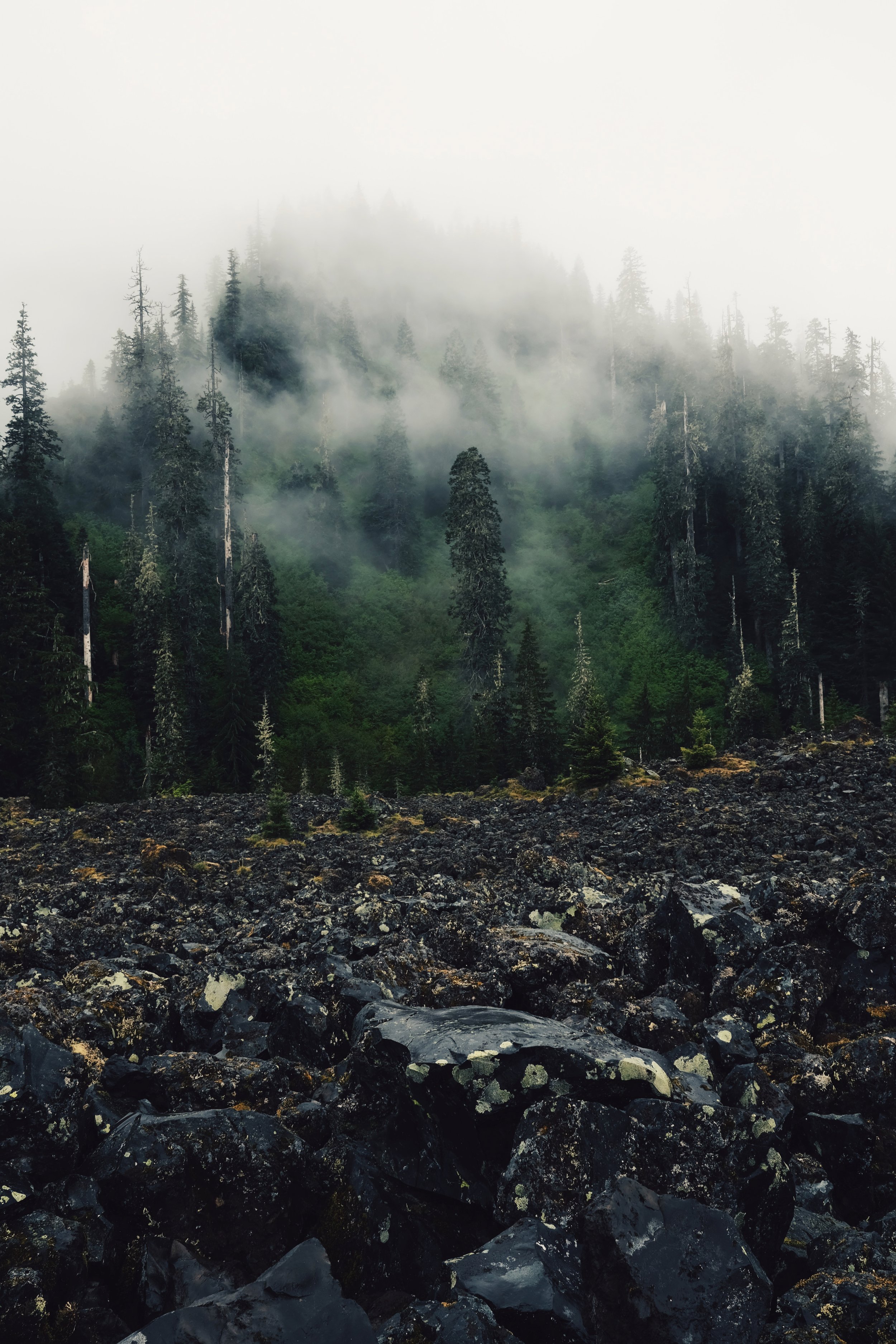


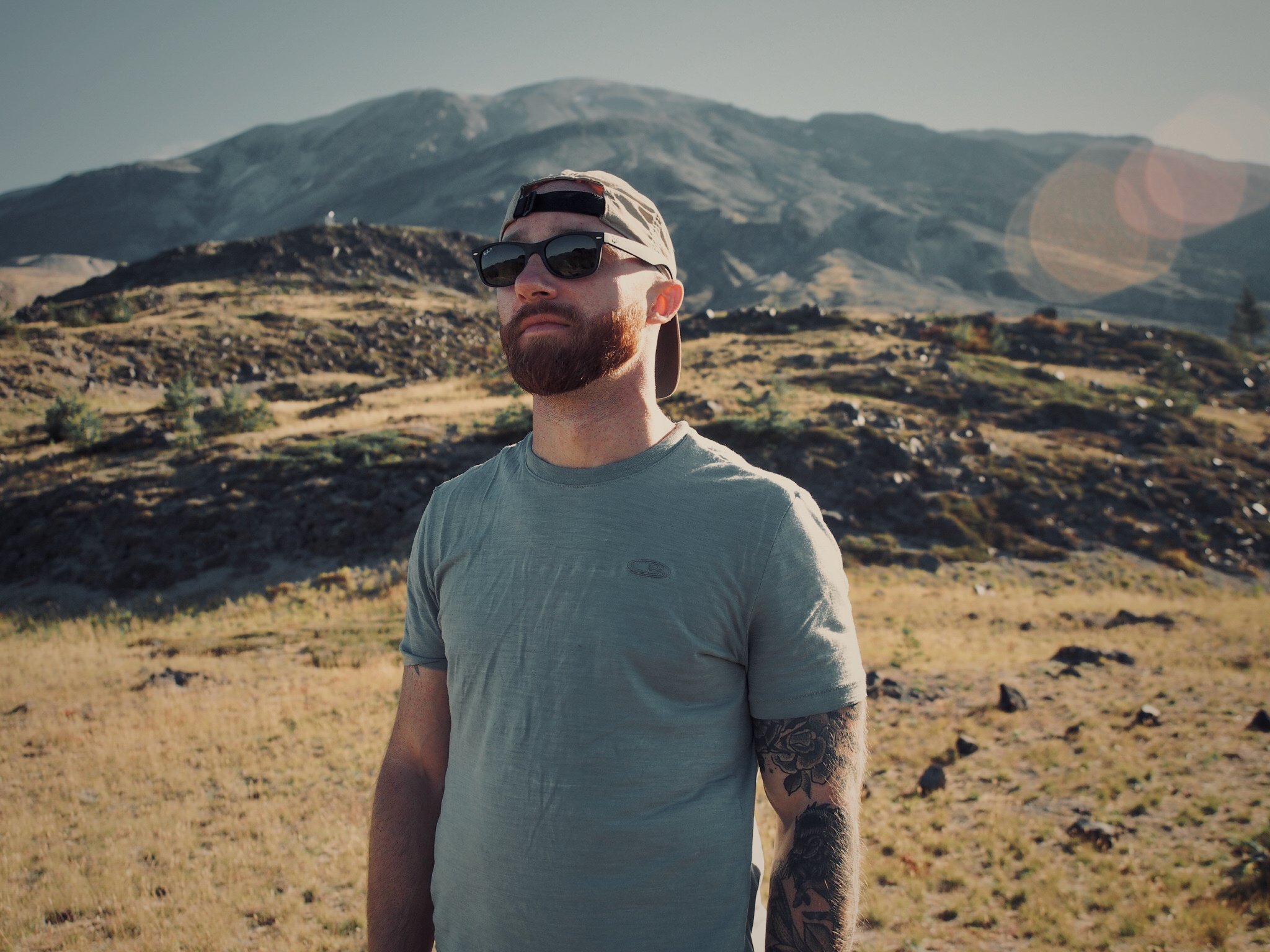


Learn how to use a successful military planning framework to enhance your backpacking plans to ensure success, enjoyment, and safety.